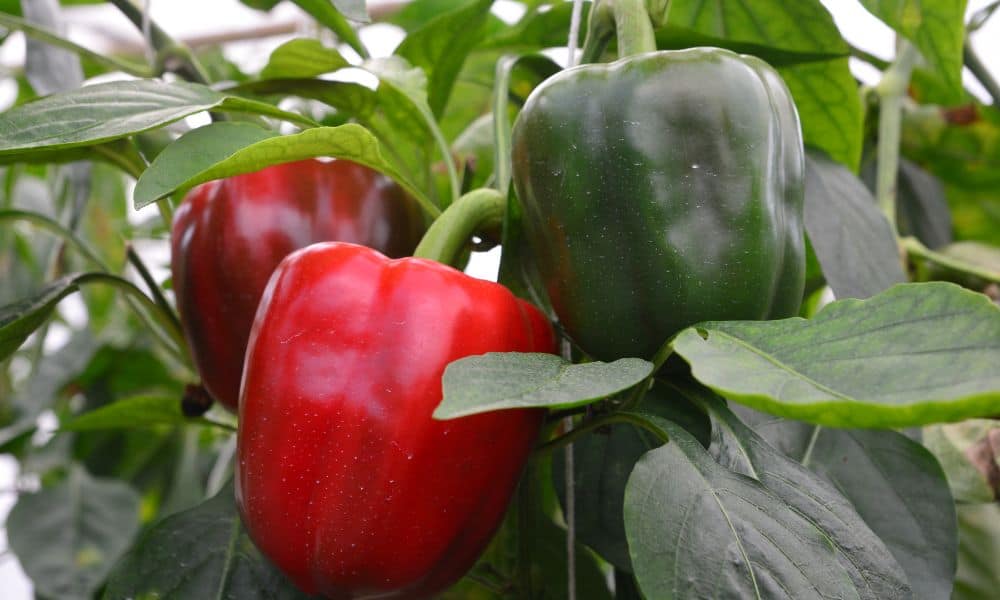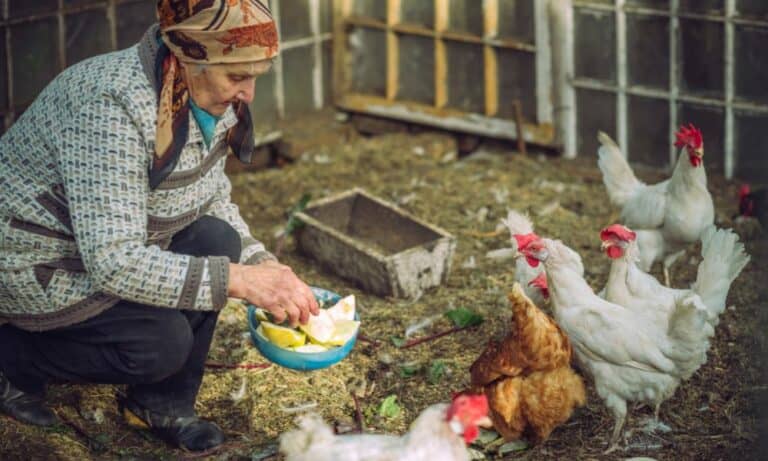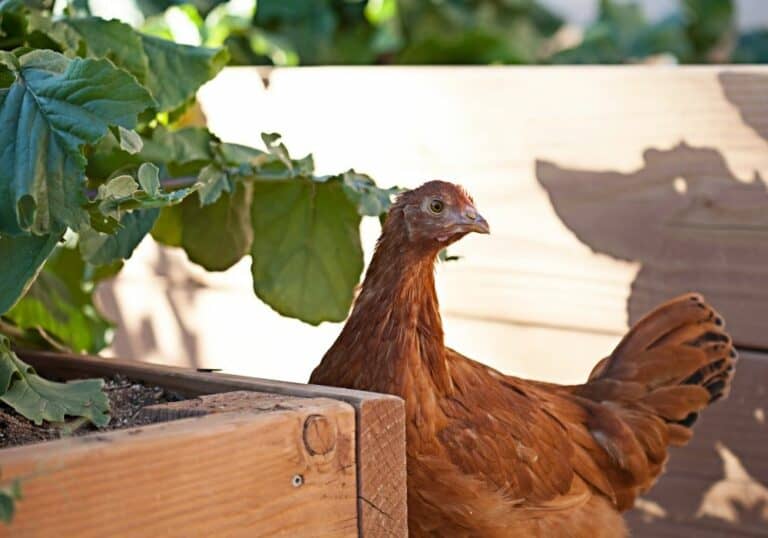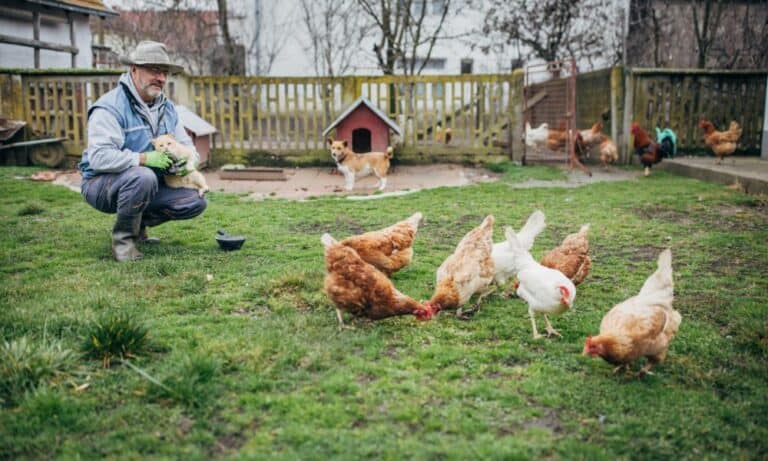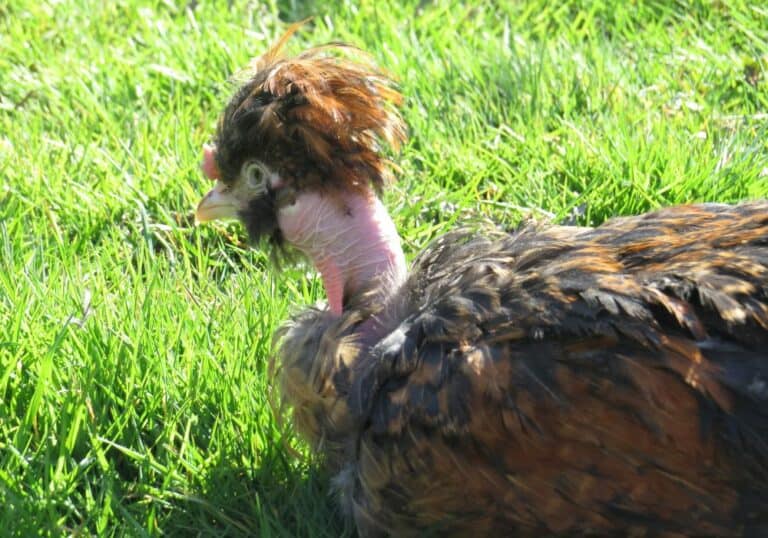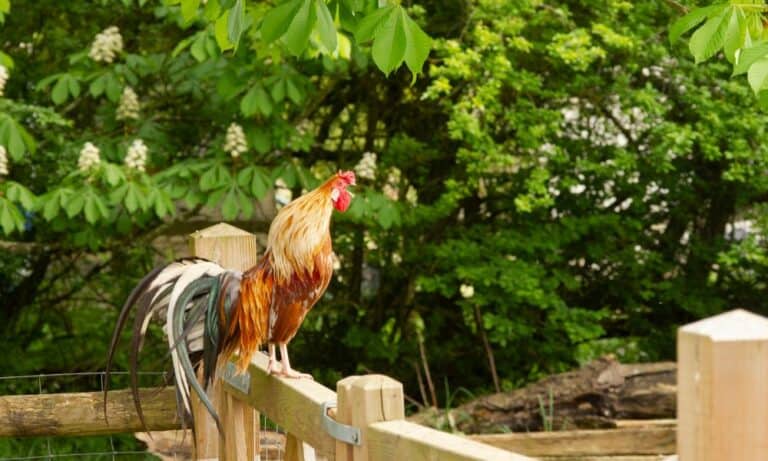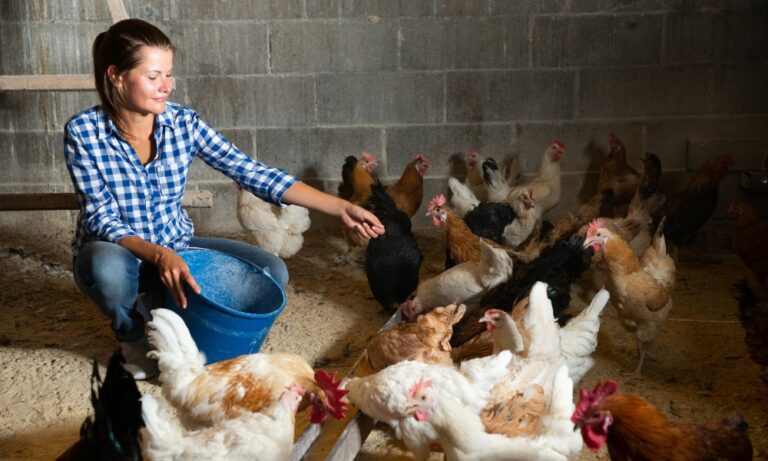Farmers know that chickens enjoy many fruit and veggie as treats, but one of the questions is – Can chickens eat bell peppers? You can also wonder about bell peppers’ and their seeds’ harmlessness, particularly when buying this fruit on the market.
The excellent thing is that bell peppers are nutritious fruit packed with vitamins C and B6 and micronutrients like manganese. Be careful since their greenery, including stems, foliage, and flowers, contains toxic alkaloid solanine that may hurt your chickens. Interestingly, these birds don’t mind having even hot peppers on their menu.
Raw bell pepper weighing 3.50 ounces (100 g) |
|||
| Nutrient | Red | Yellow | Green |
| Taste | Sweet | Sweet | Bitter |
| Ripeness | Ripe | Fairly ripe | Unripe |
| Energy | 30 Kcal | 26 Kcal | 20 Kcal |
What are Bell Peppers?
All peppers are native to Latin America and belong to the capsicum family. Some are sweet, while a few are recognizable for their fiery heat. You can find a few edible types, including:
- Bell peppers and jalapenos (Capsicum annum)
- Scotch bonnet and hot habanero peppers (Capsicum chinense)
- Rocoto peppers (Capsicum pubescens)
- Tabasco peppers (Capsicum frutescens)
- Aji peppers (Capsicum baccatum)
You have probably seen bell peppers in red, yellow, and green colors, but they are actually the same plants in different ripeness stages. However, they significantly differ in nutrition content and taste.
Can Chickens Eat Bell Peppers?

Chickens adore eating bell peppers of any type and color, including their seeds. Even though poultry enjoys all three varieties, yellow and red fruits are better than insufficiently ripe green ones since they are more nutritious.
Never offer chickens stems, flowers, and foliage since the solanine they contain may upset their digestive system and cause unpleasant symptoms. This toxic glycoalkaloid may lead to fatal outcomes when fowl consume plant greenery at high levels.
1. Green bell peppers
All bell peppers are green initially, meaning the color doesn’t make them separated species but only more or less mature. That is why green ones taste slightly bitter compared to red and yellow varieties and may contain solanine.
Even though green bell peppers are packed with minerals and vitamins, they are never a favorite option for your flock. Additionally, never offer stems, leaves, and flowers to prevent poisoning.
On the other hand, you can feed your chickens with cooked green peppers. They have a lower level of nutrients but are still a healthy treat. If you want to give them leftovers from your dinner, never add harmful ingredients, like spices, salt, sugar, oil, and butter, to the everyday meal.
2. Yellow bell peppers
Yellow-orange bell peppers were green before starting to ripen. They are still insufficiently ripe and a bit crunchy but are juicier and sweeter than green ones.
They are also more nutritious and contain more b-carotene than green fruit. Chickens happily eat these bell peppers, including their seeds, but you should avoid offering leaves and stems.
3. Red bell peppers
These bell peppers are fully ripened and have a sweeter taste and better nutritional content than those in earlier maturation stages. You can expect your chicken to prefer eating them first because of the lowest solanine percentage.
4. Bell pepper skin
Bell pepper skin is entirely edible and safe for poultry to consume. However, chicks and smaller chicken breeds may have an issue with swallowing it.
5. Bell pepper seeds
Chickens can eat complete bell pepper regardless of color, including seeds and core. Since seeds have decent nutritional content, they benefit chicken’s overall health.
6. Bell pepper stems, flowers, and leaves
Unlike yummy and nutritious bell pepper fruit, foliage, stems, and flowers can be toxic for chickens because of a high level of solanine. Even though a few leaves won’t harm your flock, offering a high amount of this greenery can sometimes be fatal.
7. Paprika and cayenne (dried peppers)
Paprika and cayenne are spices after drying and grounding red bell peppers. You can offer both to your chickens as safe treats for consumption and hens to naturally improve yolk color.
Mixing them with regular feed is the best option to provide additional nutrients to each meal. A particular cayenne advantage is keeping rodents away from chicken food since they can’t stand spiciness.
8. Red pepper flakes
Including a moderate amount of red pepper flakes in the chicken diet is a healthy option since they boost the immune system.
Even though this food protects poultry from bacterial infections, it can’t be a substitute for meals but only occasional treats mixed with feed. Since chickens have no possibility to recognize and feel a hot taste, they will eat flakes without objections.
Ways to Feed Your Chickens with Bell Peppers
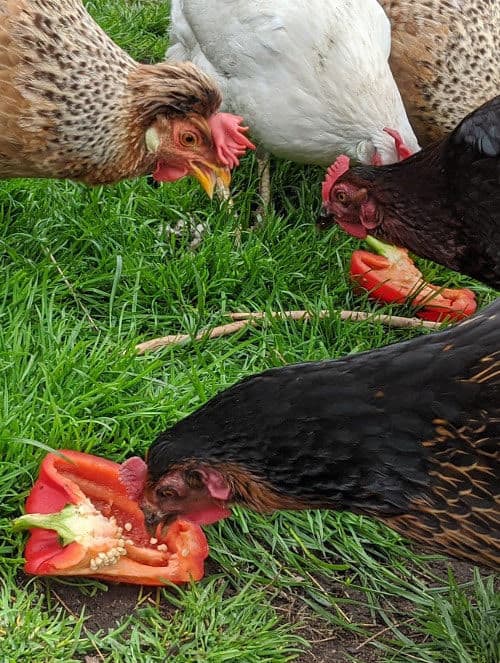
There is no need for special preparation when feeding chickens with bell peppers. Toss whole fruit or cut it in half or smaller pieces and let your flock enjoy pecking.
You can also hang whole bell peppers at the enclosure top and let chickens nibble them as a treat when desired, but take care to remove stems and greenery. Besides raw bell peppers, your chickens will probably like them cooked. Mix leftovers with regular feed and offer them during a regular meal.
The chickens’ daily diet should ideally contain about 5% bell peppers. Offering ripe fruit to hens provides high levels of carotenes, making yolks darker and more visually appealing. Be prepared that poultry always starts a meal with seeds and then nibbles crisp fruit and core.
Even chicks can consume bell peppers, but not in the first 4 to 6 weeks of age when their digestive system is insufficiently developed. Therefore, they are unable to process all food types like adults. Even when they are old enough, chopping fruit into small pieces will be necessary to prevent choking.
Bell Peppers Benefits and Downsides
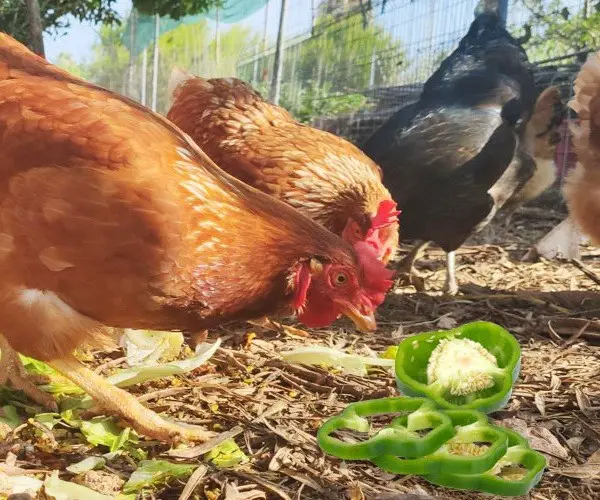
Red bell peppers provide the highest energy level. One cup, meaning 5.30 ounces (150 g) of chopped fruit, provides 39 calories from different nutrients:
- 13% from protein
- 10% from fat
- 77% from carbs
Even though it makes this fruit beneficial, providing at least 90% of calories from a regular high-quality feed instead of adding them as treats is crucial. Chickens can eat bell peppers daily, but they shouldn’t be a meal. Mixing one to two tablespoons of chopped fruit into a meal a few times a week is enough.
Nutrition content of red bell peppers |
|||
| Nutrients | Small – 2.60 ounces (74 g) | Large – 3.50 ounces (100 g) | A cup of chopped – 5.30 ounces (150 g) |
| Energy | 19.8 Kcal | 30 Kcal | 39 Kcal |
| Protein | 0.75 g | 1 g | 1.5 g |
| Fats | 0.2 g | 0.3 g | 0.45 g |
| Carbs | 4.5 g | 6 g | 9 g |
| Sugar | 2.5 to 3 g | 4.2 g | 6.25 g |
| Fiber | 1.7 g | 2.1 g | 3.1 g |
| Vitamin C | 80.4 mg | 158 mg | 190 mg |
| Vitamin A | 117 µg | 177 µg | 234 µg |
| a-carotene | 10 µg | 20 µg | 30 µg |
| b-carotene | 810 µg | 1,620 µg | 2,450 µg |
| Vitamin K | 3.63 µg | 4.9 µg | 7.3 µg |
| Vitamin E | 1.2 mg | 1.6 mg | 2.4 mg |
Bell peppers are beneficial for chickens because of their high water percentage. They contain approximately 92% water, making them refreshing treats during the hot summer months. Since this fruit is rich in carbs, including glucose and fructose, it is an excellent energy source.
The list of vitamins that bell peppers contain is long and includes vitamins A, C, K, E, and B complex. Plus, they are rich in choline, a-carotene, and b-carotene.
These essential nutrients alleviate the harmful stress effects in indoor chickens and help them bear high temperatures during the summer. Vitamin A is crucial for proper chick growth, while vitamin E neutralizes free radicals and prevents disease susceptibility.
Vitamin B complex and minerals in 3.50 ounces (100 g) red bell peppers |
|
| Nutrients | Amount |
| Thiamin | 0.05 mg |
| Riboflavin | 0.08 mg |
| Niacin | 0.98 mg |
| Pantothenic acid | 0.32 mg |
| Pyridoxine | 0.29 mg |
| Folates | 46 µg |
| Choline | 5.6 mg |
| Sodium | 4 mg |
| Calcium | 7 mg |
| Phosphorus | 26 mg |
| Potassium | 211 mg |
| Magnesium | 12 mg |
| Iron | 0.4 mg |
| Manganese | 0.11 mg |
| Copper | 0.02 mg |
| Selenium | 0.05 µg |
| Zinc | 0.1 mg |
Besides, you can expect this nutritious fruit with high antioxidant properties to:
- Improves chickens’ metabolism
- Stimulates their immune system
- Prevents allergies
- Improves proper digestive tract functioning
Unfortunately, feeding chickens with bell peppers may sometimes have negative consequences. For instance, green bell peppers bought in grocery shops often contain pesticides.
If you forget to wash them thoroughly, they may harm your fowl. Feeding chickens with your own fruit is the only sure way to prevent inconveniences.
Another issue is solanine since the high content makes plants from the nightshade family dangerous and potentially toxic for poultry under particular conditions. This chemical typically causes irritation in lower amounts but can be deadly in higher percentages. Therefore, you should never offer stems and foliage to your chickens.
Summary
Chickens can eat bell peppers in moderate amounts as a healthy treat but avoid offering leaves, flowers, and stems because of the solanine content.
This fruit can add some variety to your poultry’s diet, but the rule of thumb is that 90% of their daily meals should be formulated feed. That leaves only 10% to combine various nutritious ingredients, including bell peppers.

